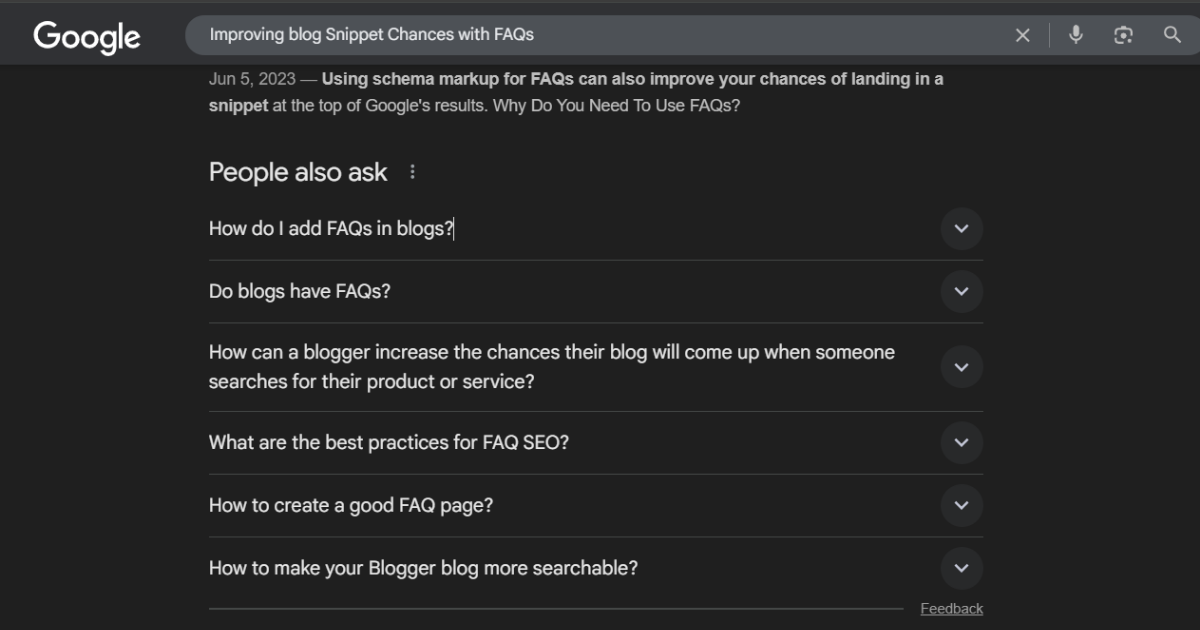To structure blog posts for featured snippets, use clear headings, concise 40–60 word paragraphs, and formats like lists or tables that align with search intent. Adding an FAQ section with schema markup further improves visibility. This structure makes your content scannable and increases your chances of capturing Google’s position zero.
So how do you land that spot? It comes down to how you structure your blog posts. Unlike traditional SEO, where length often dominates rankings, featured snippets reward clarity, formatting, and precision. You don’t need more words, you need smarter writing.
In this guide, I’ll walk you through a proven SEO formula that shows exactly how to make your blog snippet-worthy. You’ll learn how to craft headings that match search intent, write paragraphs that Google prefers, choose between lists or tables, and leverage FAQs for extra visibility. By the end, you’ll have a repeatable structure to maximize snippet potential in every post.
Why Featured Snippets Matter for Your Blog
Instead of chasing page-one rankings, featured snippets allow you to land directly in position zero, the very top of Google results. This spot builds authority, drives clicks, and gives your blog an edge.
Think of it as the difference between competing in the crowd and standing on the podium. If your post is structured correctly, Google pulls your answer as the featured snippet, making you the go-to source.
What Are Featured Snippets?

A featured snippet is Google’s direct answer, displayed at the top of search results. They usually appear in four formats:
- Paragraphs (short explanations or definitions)
- Numbered lists (step-by-step processes)
- Bulleted lists (examples, rankings, or options)
- Tables (comparisons or data summaries)
For example, when someone searches types of featured snippets, Google might show a bulleted list summarizing them. If your blog is formatted properly, it can be the one featured.
The Exact Blog Structure That Wins Featured Snippets

To maximize your snippet chances, your blog needs a clear structure:
- Start with a direct answer in the introduction.
- Use H2/H3 headings to break down related questions.
- Keep paragraphs snippable (40–60 words).
- Format answers as lists or tables when applicable.
- End with FAQs supported by schema markup.
This structure balances readability for users and scannability for Google.
Use Headings Strategically (H2, H3, H4)
Google relies on your headings to identify potential snippet answers. Each heading should mirror the way people search, using questions, “how to” phrases, or definitions.
For instance, if your keyword is optimize blog post structure for featured snippets, you’d use a heading like:
“How to Optimize Blog Post Structure for Featured Snippets” and follow with a direct 40–60 word answer.
This makes your blog highly scannable while aligning with search intent.
Write Snippable Paragraphs
The sweet spot for snippet-friendly answers is 40–60 words. Too long, and Google trims it. Too short, and it loses context.
For example:
“Structured content for featured snippets means writing in short, clear paragraphs under 60 words, directly answering user intent. This improves your chances of being selected by Google’s algorithm.”
That’s exactly the kind of content Google favors.
Lists vs. Paragraphs vs. Tables
Google doesn’t just pull snippets randomly. It matches the answer format to the query type:
- Use paragraphs for queries like what is a featured snippet.
- Use lists for step-by-step queries like how to format blog content for featured snippet list.
- Use tables for comparison-style queries like best structure for featured snippet blog posts.
By structuring your content according to the question, you maximize relevance and snippet potential.
Example: Turning Content Into a Snippet
Instead of this:
“Blog posts that rank for snippets often include structured headings, concise answers, and formatted lists.”
Rewrite as:
To make your blog snippet-friendly:
- Use structured H2 and H3 headings
- Write concise 40–60 word answers
- Provide snippable paragraph blog post example formats
- Format with lists or tables where appropriate
This format gives Google a snippet-ready list.
Improving Snippet Chances with FAQs

Adding an FAQ section gives you multiple chances to win snippets in one post.
For instance, you might include:
- What is the best way to format a blog for snippets?
- How do you use blog post headings for featured snippet optimization?
- Do FAQs increase snippet chances?
Each question becomes an opportunity for your blog to be featured
Optimize FAQs with Schema Markup
Schema markup helps Google understand your FAQs and display them in rich snippets. Adding it is easier than it sounds, especially with plugins.
- Yoast SEO and RankMath (WordPress) make adding schema simple.
- Validate your FAQ markup with Google’s Rich Results Test.
By pairing strong content with schema, your chances of winning rich snippets increase significantly.
This approach also aligns with snippet-friendly content structure, making your content easier to parse.
Keep Content Fresh for Snippet Wins
Winning a snippet isn’t permanent. Google regularly updates results. To stay competitive, keep your blog updated.
Refresh Blog Posts Every 6–12 Months
Update stats, refine wording, and restructure paragraphs if snippets change.
Track Opportunities with SEO Tools
Use tools like SEMRush featured snippet report tool or Ahrefs featured snippet opportunities blog to identify queries where you’re close to winning.
This data-driven approach helps you refine and reclaim snippets.
Conclusion
Mastering how to structure blog posts for featured snippets isn’t complicated. It’s about writing with clarity, intention, and structure that Google can easily recognize.
Instead of focusing on keyword stuffing or chasing competitors, focus on formatting your posts with snippable paragraphs, list structures, and FAQs. Then, refresh your content every 6–12 months and use tools like SEMrush or Ahrefs to spot new opportunities. This gives you a repeatable process that makes winning snippets far more predictable.
Think of it like planting a digital seed: with the right structure, your content grows into authority. Over time, each snippet you capture strengthens your visibility, credibility, and trust with readers.
When you consistently apply this approach, you don’t just compete for rankings, you own the space above them. That’s the power of featured snippets, and it’s a strategy you can start using today.
FAQs
1. What is a featured snippet?
A featured snippet is Google’s highlighted answer, shown above all search results.
2. How long should a snippet paragraph be?
Keep it between 40–60 words for best results.
3. What blog post structure works best for snippets?
Use clear H2/H3 headings, short paragraphs, and list formats.
4. Do FAQs increase snippet chances?
Yes. Adding FAQs with schema boosts your snippet visibility.
5. How often should I update content for snippets?
At least every 6–12 months to remain competitive.
6. Which is better: lists or paragraphs for snippets?
It depends on the query. Definitions work best as paragraphs, processes as lists, and comparisons as tables.
